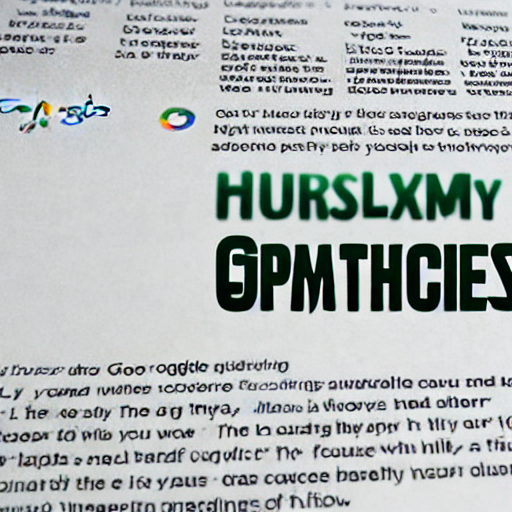

Google Ads campaigns rely heavily on attracting attention in a crowded online landscape. Your Google Ads headlines are the first thing potential customers see, and they play a crucial role in determining whether they click on your ad. Simply put, a poorly crafted headline can doom your entire campaign. This comprehensive guide delves into the best practices for Google Ad copy length, specifically focusing on headline strategies. We’ll explore the nuances of character limits, the psychology behind effective headlines, and how to tailor your messaging for maximum impact. Mastering these techniques will significantly improve your click-through rates (CTR) and ultimately, your return on investment (ROI).
Before we dive into length, let’s clarify the headline structure. Google Ads allows for up to three headlines per ad. However, not all three are always visible. The system dynamically selects the best three based on the user’s device, search query, and ad position. Typically, the first headline is always visible. The second and third headlines are only shown if there’s enough space on the user’s screen. This dynamic display means you need to consider how your headlines will appear in different contexts. It’s not enough to simply write three great headlines; you need to think about how they’ll perform individually and in combination.
The character limits for Google Ads headlines are strict and non-negotiable. Here’s a breakdown:
Exceeding these limits will result in your headline being truncated, which is a significant loss of potential impact. Truncation can be particularly damaging to your primary headline, as it’s the most visible element. It’s vital to plan your headlines carefully, considering the potential for truncation and ensuring your key message remains intact. Don’t assume users will always see all three headlines; design for the most likely scenario – the first headline being fully visible.
Different scenarios demand different headline lengths. Here’s a breakdown of effective strategies:
These headlines are ideal for high-impact keywords and immediate attention. They’re perfect for conveying a clear benefit or offering a strong call to action. For example: “Free Shipping” or “Best Deals Now”. The brevity forces you to be concise and impactful. These headlines are particularly effective when targeting users who are actively searching for a specific solution.
This length provides more room for detail while still adhering to the character limit. It’s a versatile option for highlighting key features, benefits, or promotions. Consider an example: “Luxury Watches – Shop Now” or “Affordable Web Design”. This length allows you to include a compelling value proposition without sacrificing readability. It’s a good balance between conciseness and information.
While less common due to truncation risk, longer headlines can be effective when used strategically. They’re best suited for conveying a more detailed explanation or a unique selling proposition (USP). For instance: “Top Rated Accounting Services” or “Get a Free Consultation Today”. However, you must be extremely careful with longer headlines, ensuring they don’t get cut off and that the core message remains clear. A well-crafted longer headline can establish authority and provide more context, but it’s a higher-risk strategy.
Understanding the psychology behind effective headlines is crucial for maximizing your CTR. Here are some key principles:
Remember, your headline is the first impression. It needs to immediately resonate with the user’s needs and desires. A poorly crafted headline, regardless of its length, will likely be ignored.
Google Ads allows for A/B testing of your headlines. This is absolutely essential for optimizing your campaigns. Create multiple variations of your headlines and let Google’s algorithm determine which performs best. Don’t rely on your gut feeling; data is your friend. Track your CTRs closely and make adjustments based on the results. Continuously test different approaches to see what resonates most with your target audience. Experiment with different lengths, wording, and calls to action. The key is to iterate and refine your headlines over time.
Tools like Google Optimize can also be integrated to further enhance your testing capabilities. Regularly review your campaign performance and make data-driven decisions. Don’t be afraid to abandon headlines that aren’t working. A/B testing is a continuous process, not a one-time event.
Let’s examine some real-world examples of effective Google Ad headlines:
Analyzing these examples demonstrates the importance of tailoring your headlines to your specific product or service and target audience.
Optimizing your Google Ad headlines is a critical component of a successful campaign. By understanding the psychology of headlines, testing different approaches, and continuously refining your strategy, you can significantly improve your CTR and ultimately drive more conversions. Remember to prioritize clarity, relevance, and a compelling call to action. Don’t be afraid to experiment and embrace a data-driven approach.
**Disclaimer:** *This information is for general guidance only. Google Ads policies and best practices are subject to change. Always refer to the official Google Ads documentation for the most up-to-date information.*
**Thank you for reading!**
Keywords: Google Ads, Headlines, CTR, Optimization, A/B Testing, Conversion Rate, Advertising, PPC, Digital Marketing
Tags: Google Ads, Google Ad Copy, Headline Strategies, Ad Copy Length, Click-Through Rate, CTR, PPC, Advertising, Google Ads Best Practices
0 Comments